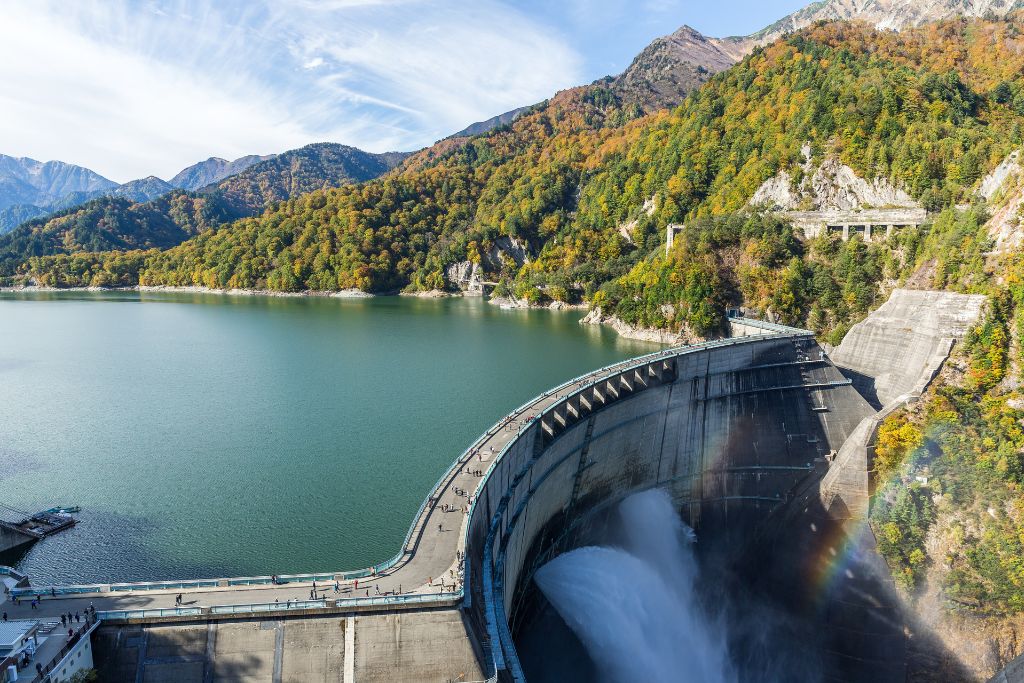At least 487 river barriers were removed across 15 European countries last year, with France leading the way.
—
European countries removed a record number of river barriers last year, contributing to restoring the free-flowing state of rivers and streams across the continent, a new report has found.
According to data collected by Dam Removal Europe (DRE), a coalition of seven organisations, including the World Wildlife Fund, The Rivers Trust, and The Nature Conservancy, at least 487 barriers were removed in 15 European countries, with France leading the way, followed by Spain, Sweden, and Denmark. The interventions led to the reconnection of more than 4,300 kilometres of rivers.
“It is amazing to witness another record-breaking year for dam removals in European rivers. Almost 500 barriers – a 50% increase from the report published last year. It shows the movement is growing fast and brings new hope for the thriving of free-flowing rivers and people”, said Herman Wanningen, founder of the World Fish Migration Foundation and c-founder of DRE.
River barriers – including weirs, culverts, dams, ramps, and ford – are linked to habitat degradation and biodiversity loss, and they alter the natural nutrient flow, changing the movement of sediment and nutrients and water levels, and leading to pollution. Exposure to extreme weather can also affect the structure, rendering them obsolete and heightening the risk of structural damage and failure.
Impacts of Dams
Several studies have focused on the environmental impacts of dams, massive structures that retain water for domestic use, irrigation, hydroelectricity generation, and for use in industrial processes. When dams block the flow of water across a river, they trap enormous amounts of lake sediments in their reservoirs. Underwater microbes feed on the organic matter that gets accumulated in these sediments and produce methane, a potent greenhouse gas that significantly contributes to global warming. Additionally, dams lead to the fragmentation of rivers and the destruction of surrounding forests, inevitably eliminating valuable carbon sinks.
Vincent St. Louis, a biogeochemist at the University of Alberta, Canada, was the first to calculate the total contribution of reservoirs around the world to greenhouse gas (GHG) emissions, finding that they collectively contribute roughly 1.3% of the world’s annual GHG emissions, as much as the entire nation of Canada.
The impact on riverine biodiversity cannot be understated either. Dams alter the natural flow of the river, thereby fracturing the migratory routes of most fish. As fish are unable to spawn, predators like the dolphin cannot eat. As dams impede the flow of rivers, they also deter the flow of vital nutrients like carbon, nitrogen, silicon, and phosphorus along the nexus of the river and its tributaries. Sedimentation in the reservoir leads to increased nutrient retention upstream, depriving the downstream areas of nutrient-rich sediment altogether.
More on the topic: Dams: Economic Assets or Ecological Liabilities?
Barrier Removal as Restoration Tool
With evidence of the real impacts of barriers growing, many European countries – particularly in western and northern Europe, where barrier density is highest – are slowly beginning to view barrier removal as an effective river restoration tool, DRE said in its report.
“We are delighted that the idea of free-flowing rivers is gaining ground in other European countries. Restoring free-flowing rivers is a truly effective solution for restoring the functionality and life of rivers,” said Roberto Epple, president of the European Rivers Network and co-founder of DRE. “The policy for restoring rivers in France is an example elsewhere in Europe and remains inspiring. The Water Agencies have an essential role that must be supported and strengthened to meet the many challenges ahead.”
The coalition expects barrier removals to pick up further following the Parliament’s approval of the Nature Restoration Law last February.
The law, a crucial part of the bloc’s green agenda, is one of the biggest environmental policies the EU has ever put forward. It requires member states to restore at least 30% of their land and sea habitats by 2030 – including forests, grasslands, and wetlands but also rivers, lakes, and coral beds – increasing to 60% by 2040, and 90% by mid-century. Aside from other interventions, Article 7 of the law sets obligations to remove man-made river barriers to reach the EU’s objective to restore the free-flowing condition of at least 25,000 km of rivers in Europe by decade’s end.
Nevertheless, the law is currently in limbo, with at least six member states withdrawing their support ahead of the European Council vote, the last step to pass it.



















